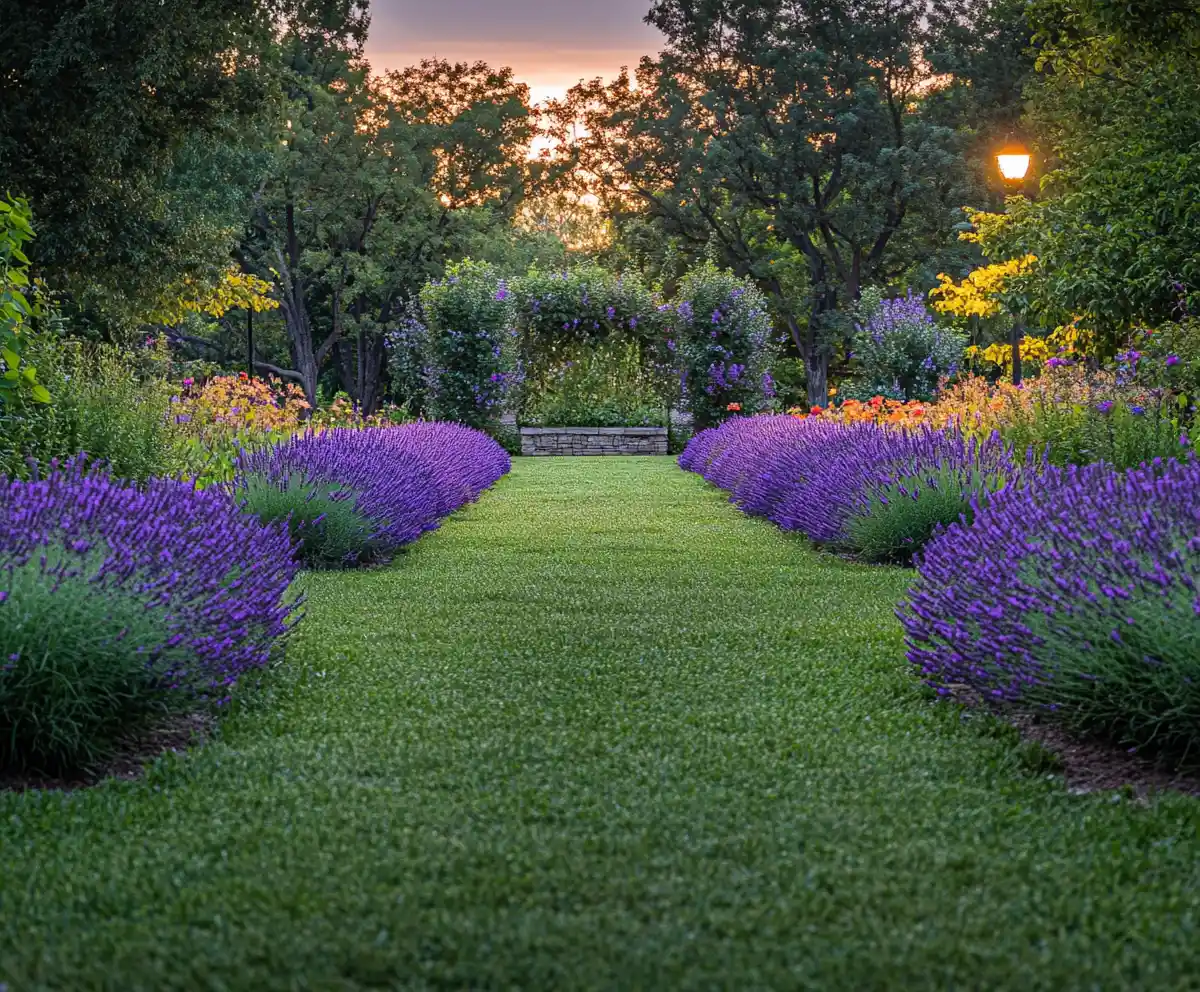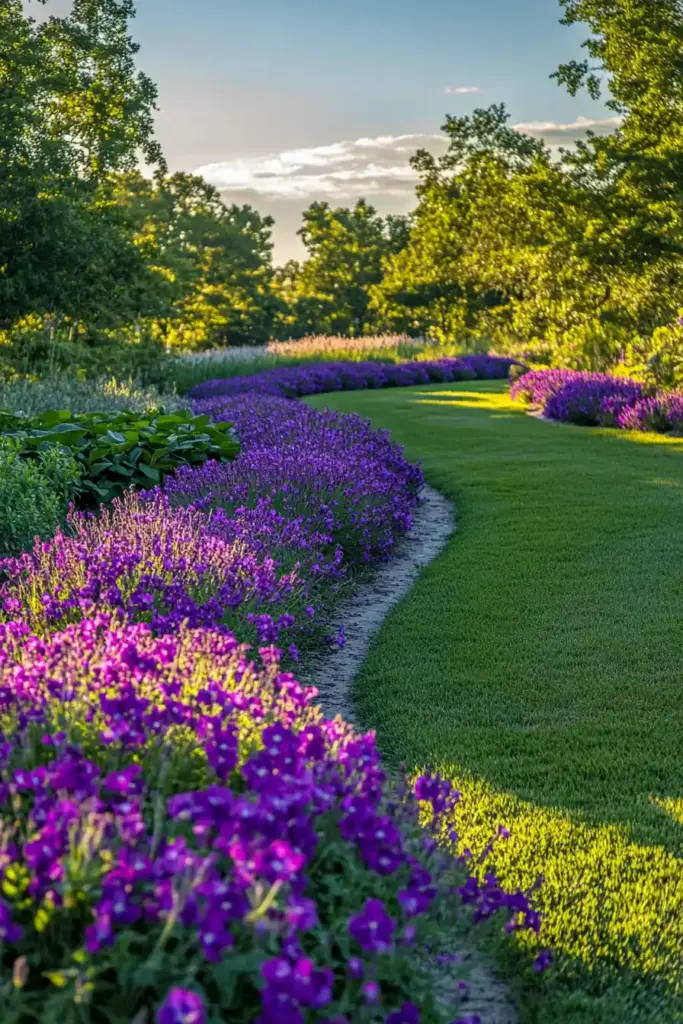Lavender hedges bring a delightful combination of beauty, fragrance, and wildlife-friendly charm to Australian gardens. Their soft purple hues, aromatic foliage, and resilience make them a fantastic low-maintenance choice for both beginner and seasoned gardeners. Even better, lavender thrives under Australia’s sunny skies, rewarding you with seasons of blooms and the happy buzz of pollinators.
In this guide, you’ll learn step-by-step how to grow a lush, long-lasting lavender hedge — from picking the best varieties to planting, pruning, and caring for your hedge for years to come.
Steps to Grow a Lavender Hedge
Building a healthy, vibrant lavender hedge in Australia is easier than you might think — but success starts with careful planning. Here’s exactly how to do it:
Select the Right Variety
Choosing the right lavender variety is key to a lush and thriving hedge.
For Australian conditions, English lavender (Lavandula angustifolia) and its hybrids are hands-down the best choices. They’re hardy, beautifully scented, and known for their consistent growth habit, making them perfect for shaping into neat, dense hedges.
Some popular options include:
- ‘Purity’ – White flowering and wonderfully fragrant.
- ‘Melissa Lilac’ – Soft mauve blooms and a more compact form.
When to Plant
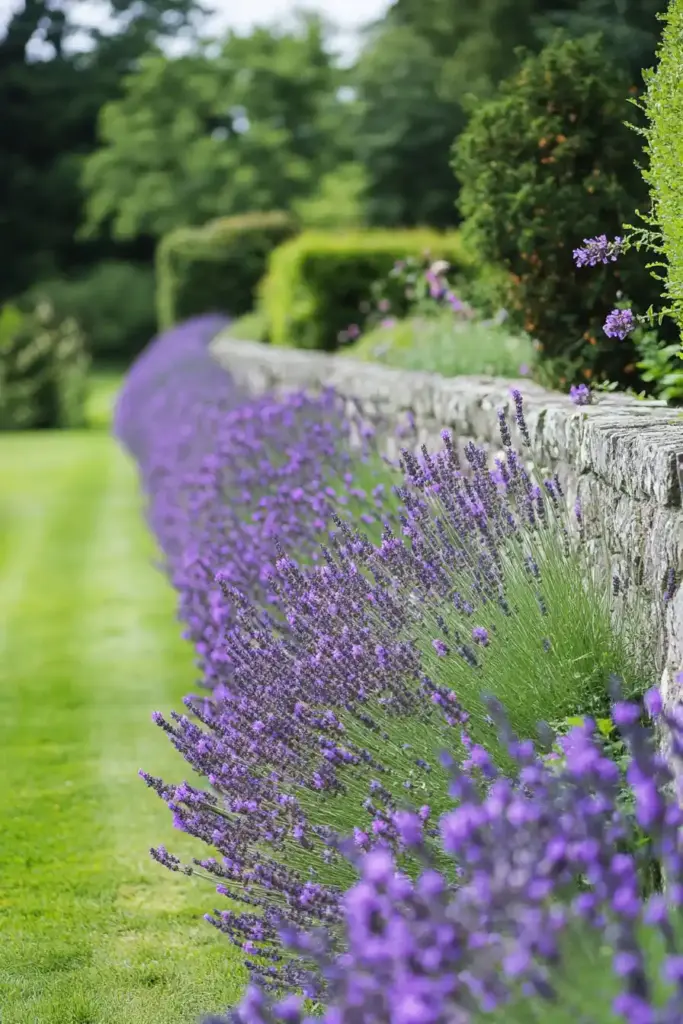
Timing is everything. The best time to plant your lavender hedge is in spring, once the risk of frost has safely passed.
Although English lavender can tolerate a light frost, young plants need time to establish strong roots before facing the cooler months.
Planting in spring gives them a full season of sunshine and growth, setting them up for a hardy, thriving future.
Where to Plant
Lavender loves the sun — the more, the better!
Choose a full sun location that receives at least 6–8 hours of direct sunlight per day. Also, think about airflow: lavender thrives when there’s good air circulation around the plants.
Equally important is soil drainage. Lavender hates “wet feet” — heavy, soggy soils can quickly lead to root rot. Pick a spot where water drains away quickly after rain.
Preparing the Soil
Good soil preparation makes all the difference between a struggling hedge and one that flourishes for years.
Here’s what lavender loves:
- Well-draining soil: Sandy loam is ideal. If your soil is heavy clay, lighten it by adding gypsum to improve drainage.
- Slightly alkaline conditions: Aim for a soil pH around 6.5 to 7.5. Avoid adding too much compost or organic matter, as it can acidify the soil — something lavender doesn’t appreciate.
- Optional mounding: In wetter areas or heavier soils, mounding the soil up a little before planting can greatly enhance drainage and prevent root rot.
Spending a little time getting the soil right before planting will pay off with healthier, happier plants.
How to Plant

Once your soil is ready, it’s time to start planting your lavender hedge!
Follow these steps:
- Spacing: Plant each lavender 30–45 cm apart. This gives them room to spread and form a dense, bushy hedge.
- Digging Holes: Each hole should be twice as wide and as deep as the plant’s root ball. This loosens the surrounding soil and makes it easier for roots to establish.
- Handling Roots: Gently tease out the roots if they’re circling the root ball. This encourages outward growth rather than staying root-bound.
- Planting: Place the plant in the hole so that the top of the root ball is level with the soil surface.
- Backfilling: Fill the hole with the original soil, gently firming it around the roots.
- Watering In: Give each plant a thorough watering to help settle the soil and eliminate air pockets.
Caring for Your Lavender Hedge
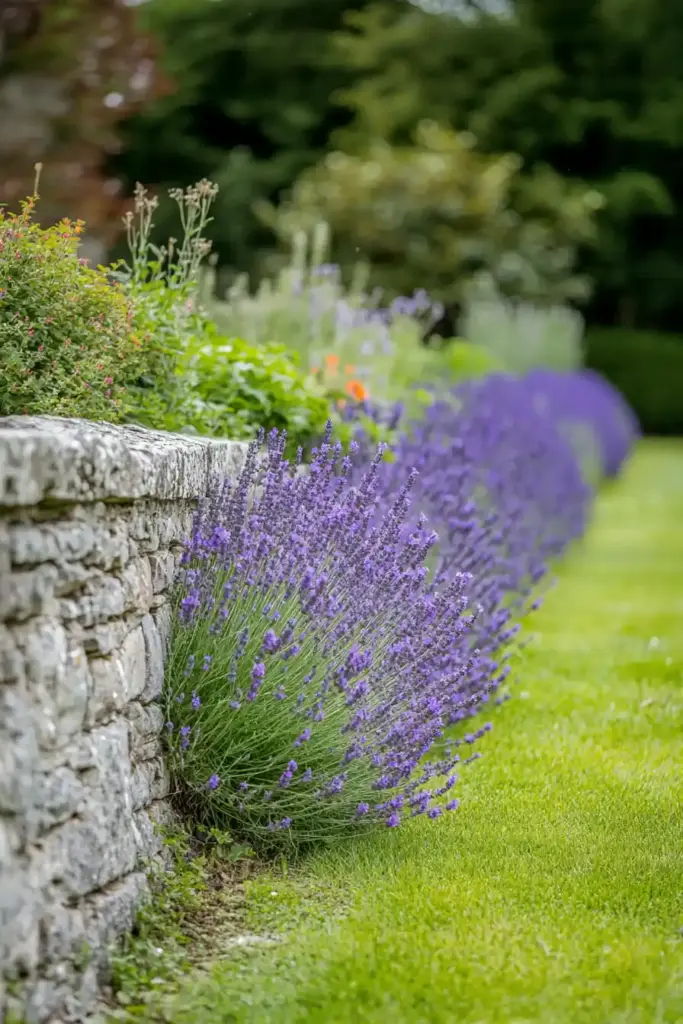
Once planted, your lavender hedge needs some TLC, especially during its first year. Here’s how to nurture it:
- Watering:
- In the first season, water your lavender when the top 5–10 cm of soil feels dry.
- Once established, lavender is drought-tolerant and usually only needs watering during prolonged dry spells.
- Feeding:
- Lavender doesn’t demand heavy feeding. However, a couple of applications of liquid seaweed fertilizer (like Seasol) during the first growing season can help promote strong root development.
- Deadheading:
- Snip off spent flowers during summer to encourage fresh blooms and maintain a neat appearance.
Remember: it’s much easier to maintain a lush lavender hedge if you encourage healthy roots and avoid overwatering early on!
Pruning Your Lavender Hedge
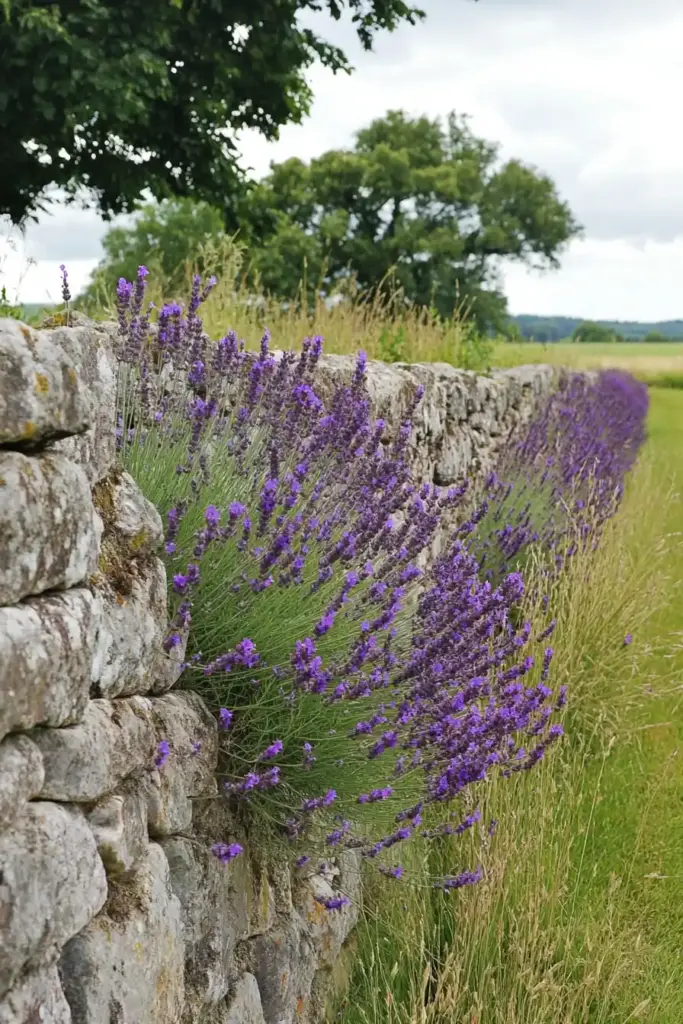
Regular pruning keeps your lavender hedge dense, tidy, and prevents it from becoming woody and sparse.
Here’s the best way to prune:
- When to prune:
- Prune once a year, right after flowering finishes in late summer.
- How to prune:
- Remove all spent flower stalks.
- Lightly trim the green foliage back by around 2.5 cm.
- Important: Avoid cutting into old, woody stems — lavender doesn’t easily reshoot from mature wood.
- Bonus tip:
- In spring, you can give the hedge a very light trim to maintain its shape, but keep it gentle!
Regular, mindful pruning will help your lavender stay lush, green, and beautifully compact for many years.
Lavender Problems, Pests, and Diseases
One of the many reasons gardeners love lavender is its hardiness — but there’s still one major thing to watch out for: root rot.
- Root rot risk:
- Root rot happens when the soil is too wet and doesn’t drain properly.
- Prevent it by choosing a free-draining soil and avoiding overwatering.
Otherwise, English lavender and its hybrids are generally trouble-free. Pests rarely bother them, and their fragrant oils even deter many common garden insects.
In short: if you get the soil and drainage right, you’ll enjoy a healthy, low-maintenance lavender hedge with minimal issues!
FAQ
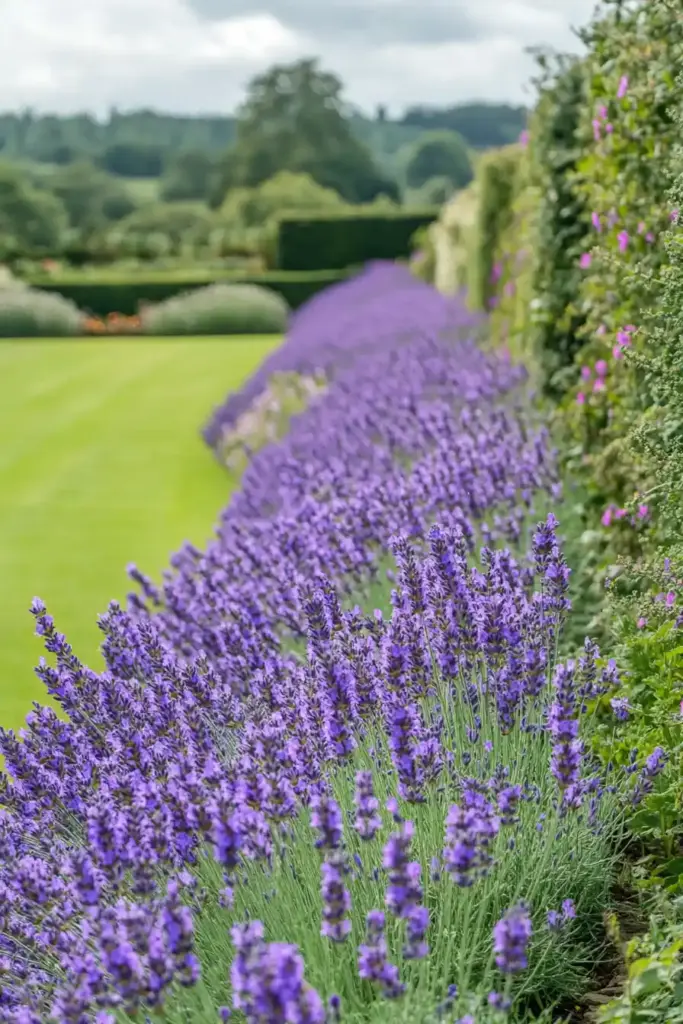
What is the best lavender variety for a hedge in Australia?
The best choice is English lavender (Lavandula angustifolia) due to its resilience and dense growth.
You can also try hybrids like:
- ‘Purity’ — featuring striking white flowers
- ‘Melissa Lilac’ — offering soft mauve blooms and a compact shape
Both are perfect for creating an elegant, fragrant hedge.
Can you use a hedge trimmer on lavender?
Yes, you can!
Just be careful:
- Only remove up to one-third of the plant at a time.
- Never cut into old, woody stems, as lavender struggles to regrow from them.
A hedge trimmer can make the job quicker, especially if you’re maintaining a large lavender border.
Conclusion
Growing a lavender hedge in Australia is a rewarding way to add beauty, fragrance, and pollinator-friendly plants to your garden.
By choosing the right variety, planting in the right spot, and following simple care tips, you’ll enjoy a vibrant, low-maintenance hedge for years to come.
Whether you line your driveway, garden paths, or borders, a lavender hedge brings timeless charm and an unmistakable scent that’s pure magic.
Happy gardening!

